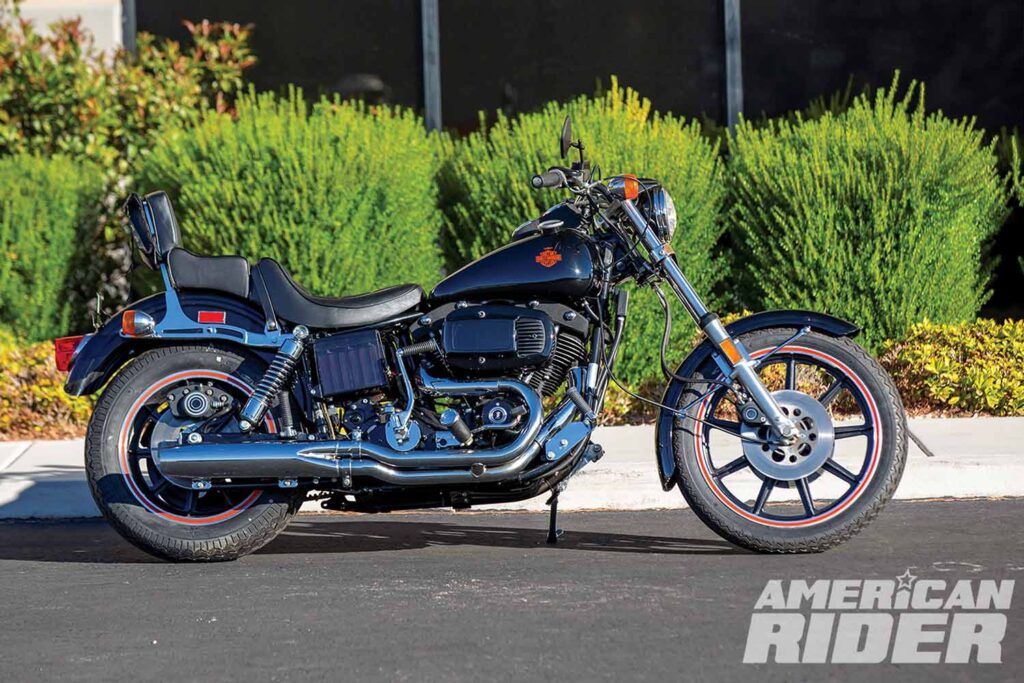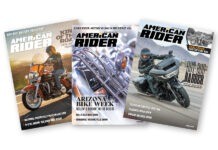It’s a usual scorching day in Las Vegas. I’m in town for the 2048 Mecum Motorcycle Auction. This year’s event features Harley-Davidson models built between 1980 and 2010. This span was chosen because it saw Harley rise from near bankruptcy to dominance in the lucrative cruiser market. The bets on the auction floor center around a 1980 FXB Sturgis and a 2002 VRSC V-Rod. It is expected that these two will pull in silly-level money.
Predicting future collectible Harley models is – as with any prediction – tricky. But as I will be 105 years old in 2048, I am fearless in boldly stating the great investment odds of those two models.

The 1980 FXB Sturgis was yet another Harley “factory custom,” riffing on various custom trends of the 1970s. Powered by the 80ci Shovelhead motor, what made this one different was its primary and final drive belts rather than chains. That’s what the “B” signifies in FXB. A first for the MoCo.
The FXB was one of the last, if not the last, new models from AMF-owned Harley. In 1981, a group of H-D executives bought the company back from American Machine and Foundry. In general, AMF Harleys are not well-regarded because they were plagued with reliability problems. The FXB was discontinued in 1982, as the uniqueness of the belts couldn’t offset the motorcycle’s poor reputation.
Current prices for FXBs in good-to-excellent condition range from $14,000 to $20,000. The original MSRP was under $6,000. Collectors get all warm and giggly over the first appearance of new tech, so I’m betting that the FXB’s drive belts will elevate it to silly-money status in that future auction.

As for the V-Rod, it never got the love Harley anticipated. It stuck around for 18 years (2002-2017), but its quirky handling and nontraditional look didn’t quite gel with U.S. riders – despite being powerful and fast. It did much better in offshore markets.
I see the first-year V-Rod as a highly collectible model. Absent the Harley logo on the tank, the V-Rod shared almost nothing with its Milwaukee stablemates. Its DOHC, 4-valve, liquid-cooled 69ci “Revolution” V-Twin powerplant pumps out 115 horsepower. Porsche Engineering had a significant hand in this engine’s development, and Erik Buell’s fingerprints can be found in the chassis design.
A note about Erik’s involvement: He was intent on producing a full-blown sportbike for his eponymous brand, but unfortunately, the committee-think at Harley overruled him and produced this liquid-cooled cruiser anomaly instead. Unlike anything else in the Harley lineup of the time, the V-Rod was not really embraced by the faithful. However, the fact that it was a Harley in name only adds to its allure for collectors.
Find more Unrepentant Curmudgeon columns here
Current V-Rod prices are all over the map. Shop carefully, and excellent examples can be found.
And I’m just gonna throw this one in the mix as well: the 1987 FXRC, a bike I once owned. A relatively small number were produced, and it’s a looker.
I’d like to hear from you. What Harley model do you believe will draw top collector money 25 years from now? Give it some thought, write up a short (100 words, max) justification, and send it to my email address. We might print your selection in my next column.
Comments? Try me at fogpirate@gmail.com


















